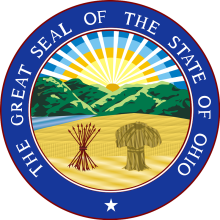Study: Lack of Internet Access Leads to Increased Covid-19 Mortality Rates in Rural, Suburban, and Urban Communities
Two decades into the twenty-first century, it still feels a little strange to justify all of the obvious ways that Internet access serves as a key pillar among the social determinants of health (SDOH) that govern our individual and collective wellbeing. The concept itself is at least two hundred years old: a German pathologist named Rudolph Virchow is often quoted as saying in the late 1840s, in response to the privation he saw in the run-up to the 1848 revolutions, that “medicine is a social science and politics is nothing else but medicine on a large scale.”
Our modern framing of the problem comes in large part from the World Health Organization, which in the preamble to its 1946 constitution wrote that “health is a state of complete physical, mental and social well-being and not merely the absence of disease or infirmity.” In 2020, the FCC has called broadband access a “super social determinant of health” in 2020, precisely because it serves as a gateway to all of the other elements of life that foster healthiness and wellbeing, from access to education, information, better food, economic opportunity, and socialization.
But a recent study published to the JAMA Open Network makes the connection even more explicit. In it, a team of researchers at The Center for Spatial Data Science at the University of Chicago show that a lack of Internet access has been strongly correlated with higher Covid-19 mortality rates across every type of household and in rural, suburban, and urban areas alike.
Internet Access Most Strongly Correlated with Covid-19 Mortality Rates





 Recognizing this principle flips common arguments about connecting rural areas on their head. Ensuring that people in rural areas are connected benefits everyone -- it is not charity. Connecting people in rural areas increases the value of the connections in urban areas, creating more value for everyone.
But the flip side may be too rarely considered. As these networks have grown in size (and therefore value), the cost of those who are excluded from them also increases significantly. This means that while the costs of not connecting rural areas are high today, those costs will be even greater in coming years. The argument is rather intuitive, but for those who want to learn more, Rahul Tongia and Ernest J Wilson III
Recognizing this principle flips common arguments about connecting rural areas on their head. Ensuring that people in rural areas are connected benefits everyone -- it is not charity. Connecting people in rural areas increases the value of the connections in urban areas, creating more value for everyone.
But the flip side may be too rarely considered. As these networks have grown in size (and therefore value), the cost of those who are excluded from them also increases significantly. This means that while the costs of not connecting rural areas are high today, those costs will be even greater in coming years. The argument is rather intuitive, but for those who want to learn more, Rahul Tongia and Ernest J Wilson III